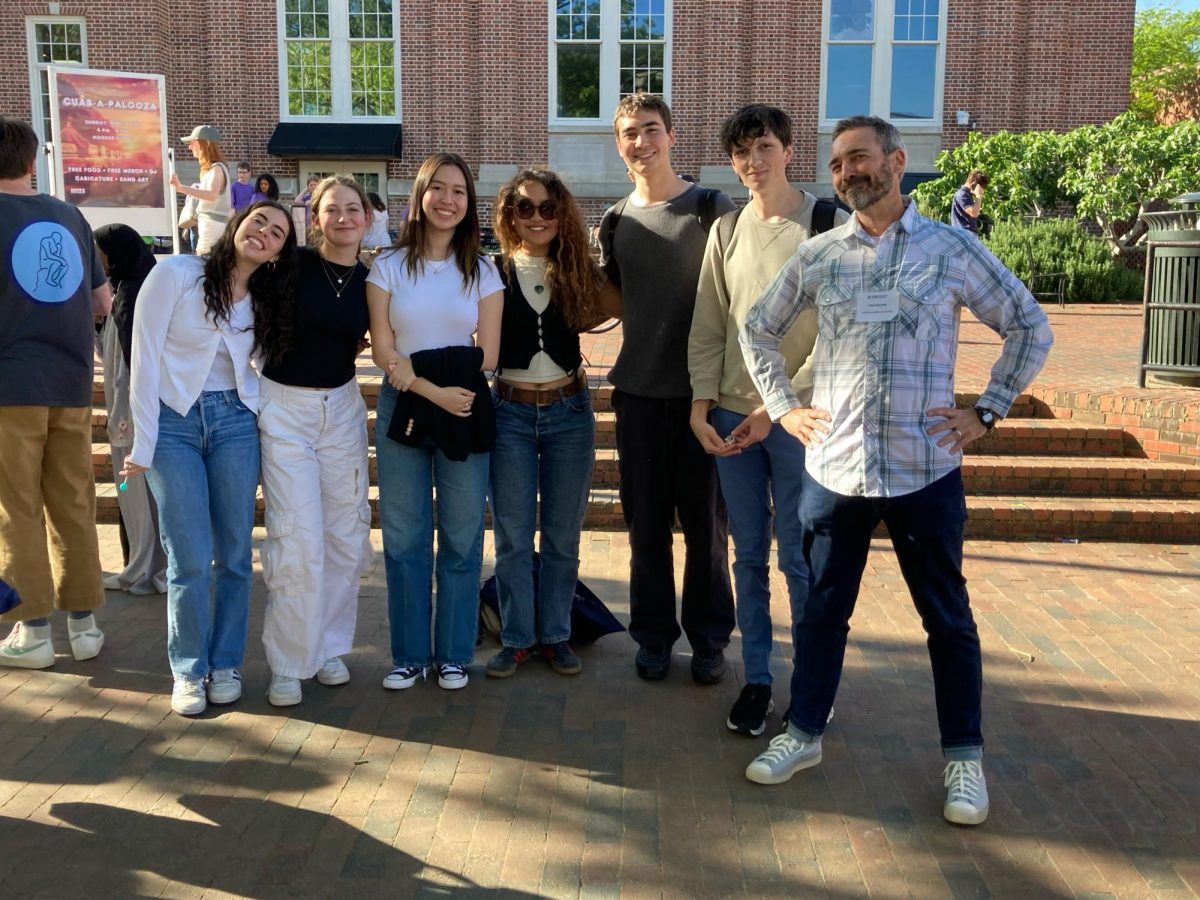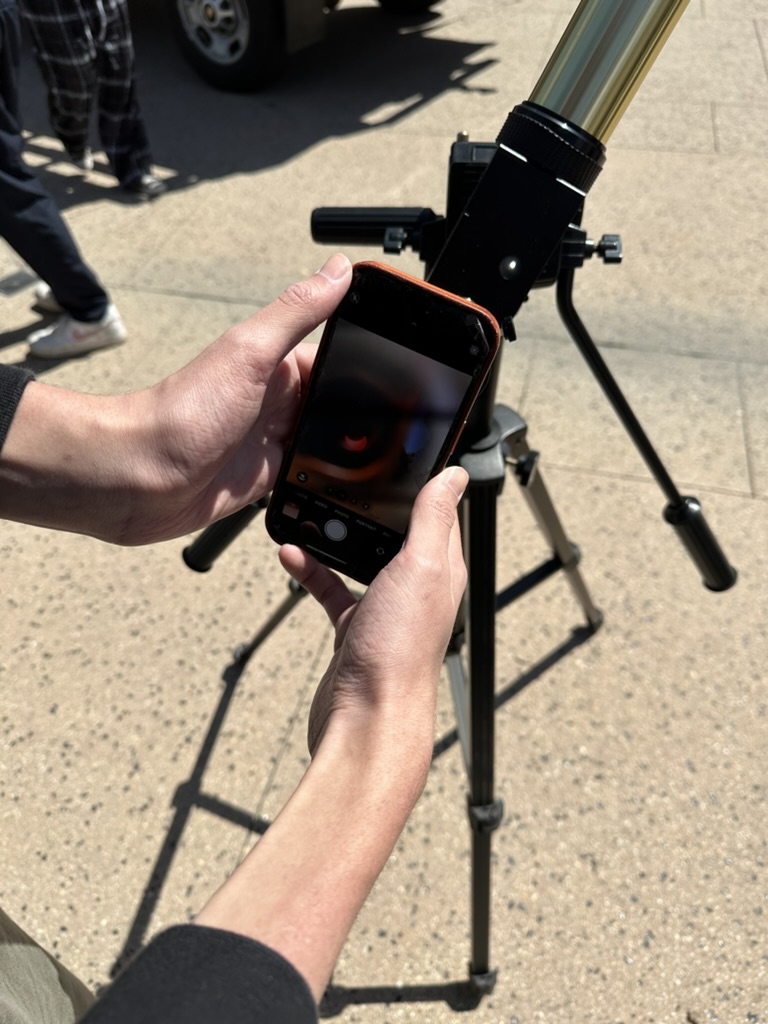By Annie Dreyer
Tucked into the snug back pocket of her dark-denim Seven jeans lies what looks like a retro pager. But in actuality it is a small miracle for Corinne Loder â09. It is her insulin pump, connected to her lower back via a wire that runs under her jeans.Â
After she pricks herself to test her blood sugar level, the insulin pump calculates the exact amount of insulin she needs. Loder must constantly regulate and pay attention to her blood sugar levels because she has diabetes â a disease in which the body does not produce or properly use insulin.
 âDiabetes makes a huge difference in daily life,â she said. âYou have to question pretty much everything you do. If I ever forget to give insulin for a meal, I end up feeling really sick. Same if I give too much insulin. Even the small things that you wouldnât normally think about, like having some of your friendâs chips, can affect your blood sugar and how you feel.â
Loder was diagnosed at age 11 and has type 1 or juvenile diabetes, as do Katie MacDonald â08 and Tessa Wick â09.
Type 1 diabetes refers to the bodyâs inability to produce insulin. Insulin is a hormone that is needed to convert food into energy. An autoimmune attack, with an unknown cause, destroys the insulin-producing cells in the pancreas of someone with type 1 diabetes.
âDiabetes is a constant presence in my life,â she said. âI must test my blood sugar between five and 10 times a day, before every meal or snack, often in the middle of the night and sometimes even during classes. I must also count every carbohydrate I eat and give myself shots of insulin every time I eat to compensate for the food. I must keep my blood sugar tester, insulin and some kind of food with sugar with me at all times.â
Like Wick, MacDonald also takes injections and uses an insulin pump.
âTaking insulin when I eat and counting carbohydrates can be vexing, but itâs become part of my routine,â MacDonald said. âBlood sugar levels are more difficult to control under conditions of heavy physical stress, which makes consistent management even more crucial during intensive exercise and sports.â
MacDonald was diagnosed with diabetes when she was 6 years old, what she refers to as her âhoneymoon phaseâ because her pancreas was still supplying some insulin. Because MacDonald was diagnosed at such a young age, she never needed to be hospitalized.
Loder and Wick, on the other hand, were hospitalized when they were diagnosed with diabetes.
Since Wickâs diabetes was caught relatively early, she was only in the hospital for the day, to get insulin in her system. Nonetheless, her stay in the hospital made quite an impact.
âYou go to the hospital and suddenly from that day on every day of the rest of your life is different and revolves around this uninvited disease,â Wick said. âGoing to the hospital concretes the idea in your mind that maybe itâs not just a bad dream.â
When Loder was first hospitalized, she had to spend several days in the hospital learning about what diabetes is, how to test her blood sugar and how to alter her diet.
Loder was hospitalized again when she was in the seventh grade because she wasnât changing her sets (what is in her insulin pump to inject insulin into her system) and wasnât checking her blood sugar levels enough.
Eventually, her insulin pump stopped working, causing her to feel very ill and need to go to the emergency room. Loder went on an Intravenous fluids for hydration and for insulin during her two day hospital stay and continued to learn more about diabetes.
âCertain things just didnât seem like that big of a deal, but when youâre dealing with such a fragile, important thing, it obviously was,â Loder said. âIt was a huge wake-up call. I always knew that having diabetes changed a lot, but when I went into the hospital for the second time for a mistake I didnât even know Iâd been making, I realized how important it is to take care of myself.â
Foreign Language and Visual Arts teacher Allan Sasaki also has diabetes. However he has type 2 diabetes, a disease that is usually diagnosed in adulthood and causes the body to not produce enough insulin or the cells to ignore the insulin.
Sasaki was diagnosed with Type 2 diabetes in 2001, and like Loder, Wick and MacDonald he must watch his sugar intake. Sasaki tests his blood with a meter once or twice a day and takes pills to control his glucose everyday, but he doesnât need to take insulin.
Sasaki, Loder and MacDonald all find that the school cafeteria does not cause any dietary hardships, and MacDonald even notes that âdiabetics canât eat sugar adage is a myth.â
Though a diabeticâs diet is not restricted, if a diabeticâs blood sugar level gets too low, the cafeteria supplies high carbohydrate foods and fruit juices to raise blood sugar levels.
âThe school cafeteria has pretty much everything I need,â Loder said. âGoing into the cafeteria thinking about my diabetes is never a problem.â
Though diabetes is currently a chronic disease, there is hope for possible cures, and new technology is developing rapidly, including stem cell research for type 1 diabetes.
âLooking ahead, in my lifetime, I expect new developments allowing better management of diabetes or even a cure â perhaps via emerging stem cell technology,â MacDonald said. âI am very supportive of that and urge others to support it.â
A youth ambassador for the Juvenile Diabetes Research Foundation, Wick has testified in front of the United States Senate to ask for help in curing the disease and promoting stem cell research. She has met with various congressmen and senators and worked as a page for the House of Representatives last summer.
Since the federal government did nothing to respond to her efforts, the Wick family co-chaired Proposition 71, which passed in 2004 and is now granting $3 billion to stem cell research in California over the next 10 years, making California the largest center for stem cell research in the world.
On a regional level, Wick also started a walking team nine years ago named âTessaâs Troopersâ for the annual JDRF Walk to Cure Diabetes. âTessaâs Troopersâ has been the number-one fund raising team in the world for the past seven years and has raised over $2 million.
âThis fight has made me feel frustrated, hopeful and nervous about my future,â Wick said. âMost of all this experience has shown me the power of when people work together, and it has made me unbelievably grateful for the miles and miles my friends, family and classmates have walked on behalf of this disease.â




































